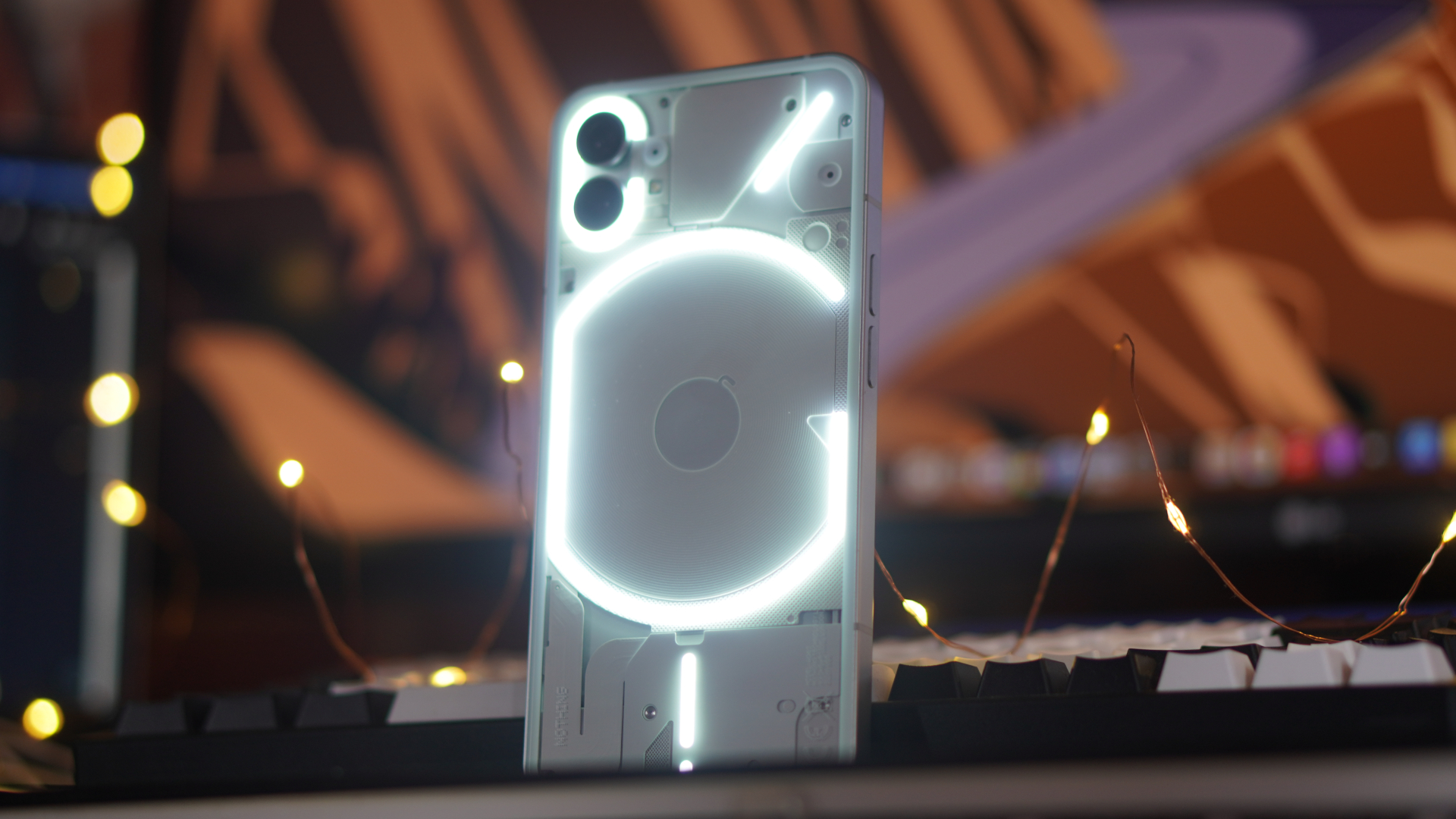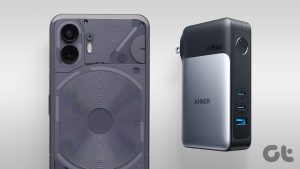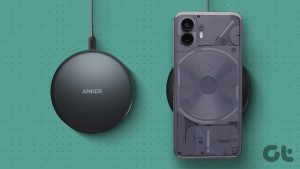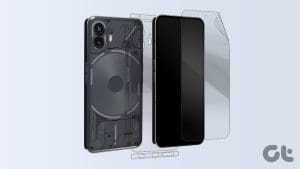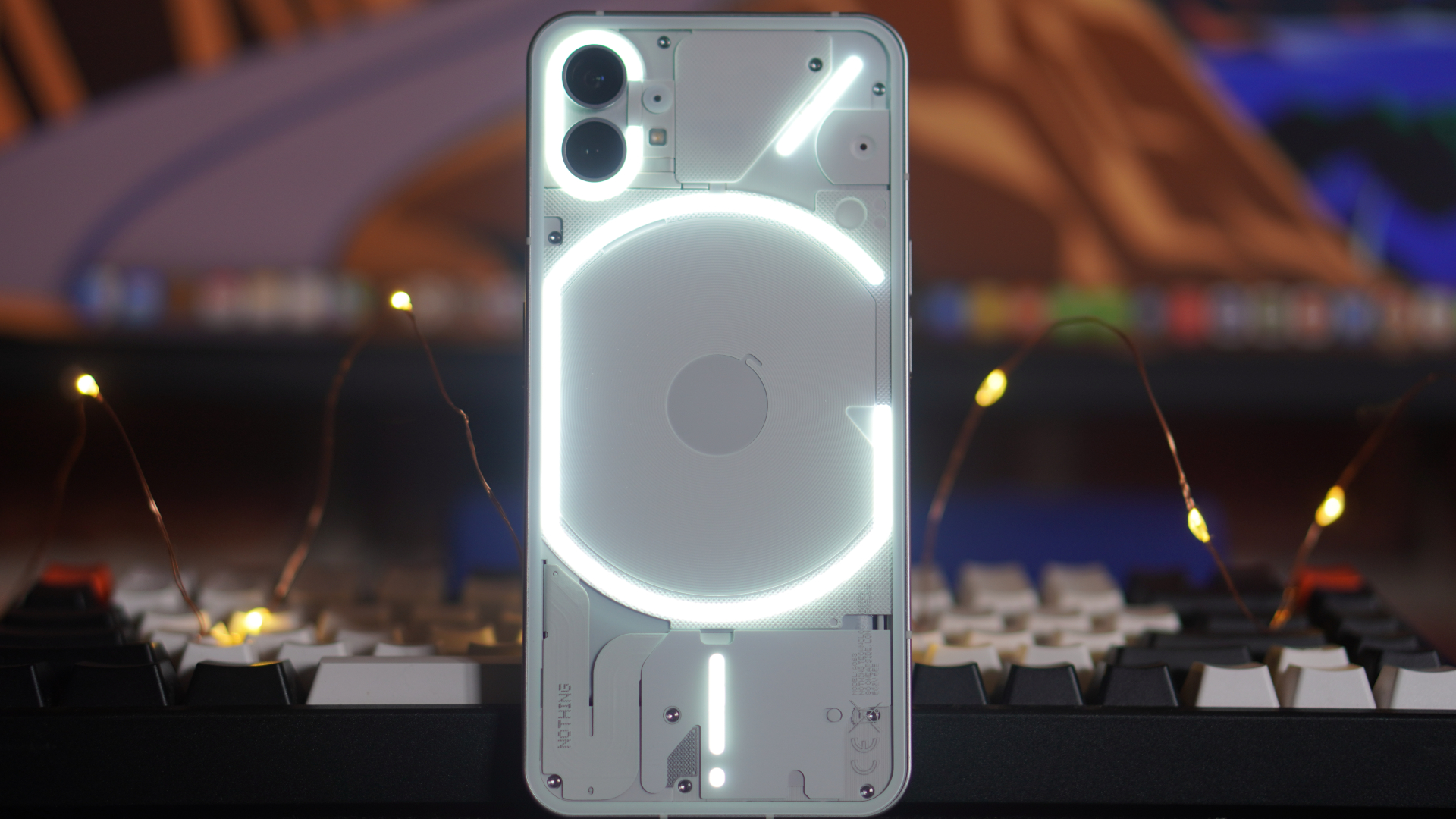The Nothing Phone (2) is finally official. While the company’s latest entrant retains a lot of the core values that made the Phone (1) so unique, it offers some improvements too. Regrettably, these enhancements come at an added cost.

By now, you must be wondering – what’s new with the Nothing Phone (2)? More importantly, does the smartphone warrant an upgrade for existing Phone (1) users? While the jury is still out on the latter, let’s take a closer look at how the Phone (2) stands out.
But first, you might want to check out the following:
- No charger in the box? Check out these fast chargers for the Nothing Phone (2).
- Want to avoid cables on your desk? A wireless charger for the Nothing Phone (2) can make charging convenient.
- Juice up your Nothing Phone (2) on the move using a USB-C car charger with power delivery.
Nothing Phone (2) vs Nothing Phone (1): Specifications
Before talking about everything in detail, here’s a quick comparison of the Nothing Phone (1) against the Nothing Phone (2).
| Feature | Nothing Phone (1) | Nothing Phone (2) |
| Dimensions | 159.2 x 75.8 x 8.3mm | 162.1 x 76.4 x 8.6mm |
| Weight | 194g | 201g |
| IP Rating | IP53 rated | IP54 rated |
| Unlocking Mechanism | Face Unlock + In-display fingerprint scanner | Face Unlock + In-display fingerprint scanner |
| Colors | Black or White | Gray or White |
| Display | 6.55-inch OLED | 6.7-inch LTPO OLED |
| Refresh Rate | 120Hz | 120Hz variable refresh rate |
| Peak Brightness | 1,200 nits | 1,600 nits |
| Processor | Qualcomm Snapdragon 778G+ | Qualcomm Snapdragon 8+ Gen 1 |
| GPU | Adreno 642L | Adreno 730 |
| RAM | 8 or 12GB LPDDR5 | 8 or 12GB LPDDR5 |
| Storage | 128 or 256GB – UFS 3.1 | 128, 256, or 512GB – UFS 3.1 |
| Battery | 4,500mAh | 4,700mAh |
| Charging | 33W (charger bought separately) | 45W (charger bought separately) |
| 15W wireless charging | 15W wireless charging | |
| 5W reverse wireless charging | 5W reverse wireless charging | |
| Rear Cameras | 50MP Sony IMX766, f/1.88 with OIS | 50MP Sony IMX890, f/1.88 with OIS |
| 50MP UW Samsung JN1, f/2.2 | 50MP UW Samsung JN1, f/2.2 | |
| Front Camera | 16MP Sony IMX471, f/2.45 | 32MP Sony IMX615, f/2.45 |
Design
When it comes to their design, the two smartphones don’t have too many noticeable differences. At first glance, you’d find them to appear quite identical. That said, the Phone (2)’s design has some noteworthy additions worth highlighting. First off, the Nothing Phone (2) is available in a new Dark Gray colorway, which replaces the Phone (1)’s Black hue. Other than that, there’s a white color option available on both smartphones.

And while you get the Glyph interface underneath on both smartphones, it’s a lot more advanced on the Phone (2). To that end, the Nothing Phone (1) came with only 12 individually addressable LED zones. The Phone (2) takes things up a notch by offering a total of 33 individually addressable LED zones. That being said, the LEDs exhibit white color only, so if you were hoping for RGB lighting, you’re out of luck.
As far as durability goes, the Phone (1) comes with IP53 certification. The newer Nothing Phone (2) comes with a slightly improved IP54 rating. In terms of weight, the newer Phone (2) is slightly heavier than its predecessor. At the same time, it offers a 0.3mm thicker girth.
Display
The Nothing Phone (2) also features a slightly bigger display. To wit, the device touts a more sizeable 6.7-inch OLED panel, as opposed to the 6.55-inch OLED on the Phone (1). Both panels offer a refresh rate of 120Hz, so you can expect the screens to relay buttery smooth transitions and UI animations.

It’s important to note that the Nothing Phone (2)’s screen is backed by LTPO tech. As such, the smartphone can smartly variate the refresh rate and drop it as low as 1Hz for static content.
At the same time, it can bump up the refresh rate to 120Hz when you’re playing games, reading articles, or navigating through the UI. Add to that, there’s also an improved 1600 nits of peak brightness, compared to the Phone (1)’s 1200 nits. Needless to say, you should be able to see the content on the Phone (2)’s screen clearly, even under the sun.
Another thing worth highlighting is that the punch-hole camera has now been shifted to the center of the Phone (2)’s screen. Other than that, both phones share a flat display with Gorilla Glass 5 protection.
Cameras
Going by the specifications, Nothing has upgraded the Phone (2)’s cameras by quite a bit. To that end, the Phone (1) shipped with a 50MP Sony IMX766 primary camera. On the other hand, the Nothing Phone (2) comes with the newer 50MP Sony IMX890 imaging sensor.
Without dwelling too much on the technicalities, one major upgrade that the consumers will notice is that the Nothing Phone (2) now supports 4K video recording at 60fps. For context, the Phone (1) could only record videos at 30fps in 4K resolution.

Other than that, Nothing has added some software tricks in the Phone (2)’s camera app. Thanks to that, the Phone (2) comes with Super-res Zoom, Motion Photos, and improved AI scene detection. As for videos, you also get support for Action Mode along with an improved Slo-mo video mode that can record clips at 480 fps.
Regarding the secondary cameras, both the Nothing Phone (1) and Phone (2) share the same 50MP Samsung JN1 sensor. As for selfies, the Nothing Phone (2) has double the pixels and is backed by a 32MP Sony IMX615 front-facing shooter. The Phone (1), on the other hand, features a 16MP Sony IMX471 sensor.
Do note that the camera hardware itself isn’t the final piece of the puzzle. You also need a good ISP for image processing. For those unaware, the ISP is embedded within the System on a Chip. The Phone (2) features a mightier chipset, so let’s take a closer look at the same.
Performance
The Nothing Phone (1) was launched as a mid-tier device, so it made sense to go with the Qualcomm Snapdragon 778G+ chipset. However, with the Phone (2), the company is trying to foray into the flagship segment. As such, opting for the Qualcomm Snapdragon 8+ Gen 1 processor seems like a great deal.

Thanks to its much more powerful SoC, the Phone (2) should outperform the Nothing Phone (1) quite easily. Although the 8+ Gen 1 processor may not be the newest option on the market, it remains a top-quality flagship chipset.
Both phones can be outfitted with either 8GB or 12GB of LPDDR5 RAM. And while they both make use of UFS 3.1 storage, the Phone (2) is available in a 512GB storage trim as well.
Software
This one’s a minor change. The Nothing Phone (2) comes with Nothing OS 2.0 based on Android 13 right out of the box. That being said, the Nothing Phone (1) has also received its Android update based on Android 13, although it runs Nothing OS 1.5.2. Nonetheless, it should receive the version 2.0 update pretty soon.

It should be highlighted that the Nothing Phone (1) booted Android 12 out of the box. The company promised three OS upgrades, so they’ve serviced one update to the phone. As such, the Phone (1) will, in all likelihood, only receive software updates till Android 15. On the other hand, the Phone (2) should receive updates till Android 16.
Battery and Charging
The Nothing Phone (1) is backed by a 4,500mAh battery and the smartphone supports 33W fast wired charging. The Phone (2) improves upon its predecessor by offering a slightly bigger 4,700mAh battery that can top up at 45W.
Speaking of charging, neither device comes with a charger included in the box. In either case, you’d have to purchase a fast charger for your Nothing smartphone separately. That being said, the Nothing Phone (2) does include the company’s transparent charging cable inside the box.
Apart from wired charging, both phones support 15W of wireless charging. You can also charge your Nothing Ear (2) or other accessories as the phones support 5W reverse wireless charging too.
Pricing and Availability
The Nothing Phone (1) wasn’t officially launched in the US. That said, you can get unlocked versions of the Phone (1) on both Amazon and eBay. The phone is priced around $400 to $550 based on where you purchase it from. While the phone is unlocked to be used with any carrier, it does not come with any warranty.
On the other hand, the Nothing Phone (2) has officially been launched in the US and the smartphone costs $599 for the 8GB RAM variant. The 12GB+256GB variant is priced at $699, while the 12GB+512GB is priced at $799.
Furthermore, the company is offering a $50 discount if you pre-order the 12GB RAM variants. The Phone (2) will go on sale starting July 17, 2023.
Which Phone Is Right for You?
Judging by the specifications and the overall package, it’s evident that the company has made noticeable improvements to the Nothing Phone (2). It still retains the Glyph interface and the transparent design that made the Phone (1) stand out but is now backed by a more powerful processor and improved camera setup.
You also get a slightly bigger battery with support for faster charging. Add to that, if you’re a resident of the USA, there’s an official warranty for you too. For what it’s worth, the Nothing Phone (2) seems like a great deal.
With that said, if you’re on a budget and don’t really care for a phone with high-end specifications, the Phone (1) still makes a strong case for itself. The Snapdragon 778G+ is a reliable processor with excellent thermal management.
It offers adequate performance and is quite efficient too, thereby aiding the Phone (1)’s battery backup. As long as you can find a trustworthy seller for it, the Phone (1) still offers excellent value for money.
So, which device will you be going with? Let us know in the comments below!
Last updated on 13 July, 2023
The above article may contain affiliate links which help support Guiding Tech. However, it does not affect our editorial integrity. The content remains unbiased and authentic.


